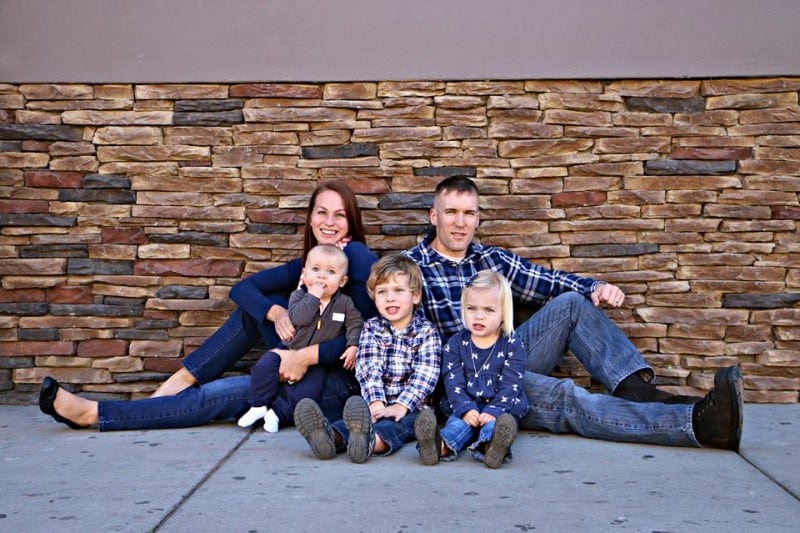Less than a day after rejoining his unit in the middle of a training exercise, a 27-year-old officer lay dying in the dark, the victim of what an Army investigator called "the intersection of multiple deficiencies."
Capt. Jonathan Wynkoop, back with Headquarters and Headquarters Battery, 2nd Battalion, 3rd Field Artillery Regiment, after attending a wedding, had led an advance party from a training area to an assembly area about 30 kilometers away as part of Operation Iron Focus, a 10-day exercise involving more than 6,000 1st Armored Division soldiers at Fort Bliss, Texas.
The field artillery officer from Maumee, Ohio, helped set up camp and, around 12:30 the morning of March 31, went to sleep on a cot next to his vehicle.
Four hours and 15 minutes later came disaster. Operating in near-pitch black conditions, with a ground guide using the wrong type of illumination and a driver with the wrong type of license — both soldiers working on about two hours' sleep — an MATV entered the unit's unmarked sleeping area. It rolled over Wynkoop as he slept, crushing his chest.
Resuscitation efforts proved fruitless. The father of three was declared dead 70 minutes after the incident. Medics waived off a planned helicopter medevac.
The Army's 15-6 investigation into Wynkoop's death took four weeks, covered more than 100 pages and identified 17 separate factors that may have contributed to the incident. Army Times obtained the report via a request under the Freedom of Information Act.
The specifics range from ignorance of safety regulations to improper licensing procedures. The command punished "several individuals" for their roles in the incident, but Maj. Gen. Stephen Twitty, 1st Armored Division commander, did not offer details, citing Privacy Act restrictions.
A spokesman with the command said the driver and the ground guide of the vehicle that ran over Wynkoop remain in uniform, though both already were facing involuntary separation because of unrelated matters prior to the March incident.
What went wrong
The Army's investigator, whose name was redacted from the report, found 2nd Battalion "did not and does not possess the tactical level of safety, expertise and knowledge that should be expected for company and above level organizations, commonly understood as Field Craft," according to the report. That verdict stemmed from an analysis into how the seemingly simple act of picking up a soldier scheduled to attend an early morning meeting as part of Iron Focus led to Wynkoop's death.
In addition to finding individual negligence, the investigator outlined more systemic problems within the unit, including:

Rachel and Jonathan Wynkoop with their three children: Jacob, Graham and Leah.
Photo Credit: Courtesy of Rachel Wynkoop
• Failure to designate, and mark, a sleep area for soldiers in the training assembly area. One witness interviewed by the investigator said the unit didn't use chemlights to identify the nighttime setup because it had run out. Another witness who was sleeping near Wynkoop the night of the incident said that after March 26, "there was no longer a sleep tent and the sleeping arrangements became a free for all."
• Complete lack of coordination between the MRAP crew and the headquarters battery command team. The crew didn't check in with the HHB before entering the area, and the HHB didn't maintain a guard for the sleeping area nor prescribe a parking space for the MRAP.
• Failure to rehearse the nighttime movement, a first for the group involved, and a lack of guidance that led participants to treat it as "an administrative movement, permitting soldiers and leaders to lose some of their tactical edge."
• A lack of safety standards that countermanded standard operating procedures and risk assessments at multiple levels, as well as those associated with the training operation itself.
• Lapses in driver training standards – one witness said six of the soldiers he'd pulled over during the operation "didn't have a license for the vehicle that they were driving," and no members of the MATV crew involved in the incident had taken a driver training course since arriving at Fort Bliss.
Human errors
That last failing may have contributed to the string of mistakes made by personnel in and around the MATV on the night of the incident.
A photograph of the area, taken hours after the incident, shows four vehicles in a diamond formation and illustrates the path of the reversing MATV and the locations of three cots, including Wynkoop's. The MATV reversed into the diamond from the upper left corner through a 26-foot gap between vehicles, then, once inside the formation, turned to the lower left, where the cots were located.
The maneuver was made minutes after the moon had set, reducing visibility to almost zero, according to the report. It was aided by a ground guide who "failed to physically walk the track that the MATV was going to travel" and used a red headlamp instead of the recommended red-lens flashlight. Neither driver nor guide used night-vision goggles, which were available and recommended for use in such navigation, the report says.
The guide shouldn't have been alone, either: Regulations quoted in the report state that two guides should be used for movements "in a confined or congested area, during limited visibility, or if the driver is in doubt about adequate clearance," as well as any time the vehicle "moves in reverse and a ground guide is needed."
Per the report, the driver hadn't driven an MATV of any type since January 2013 and was licensed on the M1240, not the M1274 in use that night.
Beyond the lapse in time behind the wheel, the improper guidance procedures and the lack of sleep, the investigator also cited "morale/distractions" as contributing to the negligent acts. While the soldiers' names are redacted, the report reveals both the driver and ground guide were on their way out of service prior to the incident: One selected for separation under the Qualitative Management Program by November for not attending a required senior leadership course on time, another for an unspecified reason stemming from evidence collected the previous year "during a commander's directed urine analysis."
"It is likely that [redacted] and [redacted] impending separations from the Army contributed to distracting them from executing their duties," the investigator found.
The soldiers remained in uniform as of Sept. 10, according to a spokesman for 1st Armored Division and Fort Bliss.
Finding fixes
The report's 13 recommendations to prevent a similar incident had two prevailing themes: Bringing the unit up to speed on regulations, SOPs and risk assessments regarding multiple safety concerns, and addressing the problems with 2-3's driver licensing program.
A unit spokesman said the division's G-4 Command Maintenance Evaluation and Training team inspected the licensing process shortly after the accident. Results of the inspection were not provided, but the report's recommendations – which included a suspension of all licenses pending the review – were followed, the spokesman said. The unit now has 150 trained and licensed drivers.
Going forward, units training at Fort Bliss will receive mandatory briefings on ground guidance of MATVs and proper marking of sleep areas, and Twitty addressed installation leaders at E-7 and above on force-protection issues during multiple briefings the month following the accident.
'We again extend our deepest sympathies to the Wynkoop family, and our thoughts and prayers continue to go out to them," Twitty said in a statement following the report's release. "Any time we lose a Soldier, it hurts."
Kevin Lilley is the features editor of Military Times.










